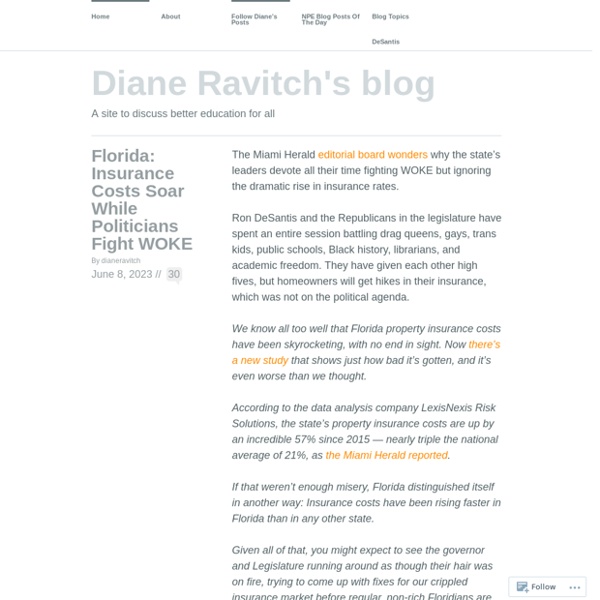Diane Ravitch's blog

Diane Ravitch (DianeRavitch)
Público.es
ABC Therapeutics Occupational Therapy Weblog
Público
Dave's Educational Blog
Philadelphia Public School Notebook
Love That Max : 5 great yoga poses for kids with special needs
This guest post is from a former colleague, Jensen Wheeler Wolfe, a certified yoga instructor in New York City. Jensen is the creator and owner of The Little Yoga Mat, a compact, eco-friendly mat for kids under age 4—used by, among others, Memorial Sloan Kettering Cancer Center in their children's ward. Jensen's a lovely, smart lady who has a lot of great insights into yoga, including poses that can benefit kids with special needs. Max is a fan—he's done yoga at school for years. Check out her suggestions: Children's yoga is a growing trend worldwide. For kids with physical disabilities, yoga can encourage stretching, posture and body awareness. Try any of these poses with your child, gradually evolving into the full sequence of five. Mountain pose Stand tall and straight like a mountain. Singing star pose Create a star with your body by separating your feet as wide as you can and stretch your arms out. Butterfly pose Sit on your mat and put the soles of your feet together, knees wide.
elDiario.es - Noticias de actualidad - Periodismo a pesar de todo
Related:
Related:



